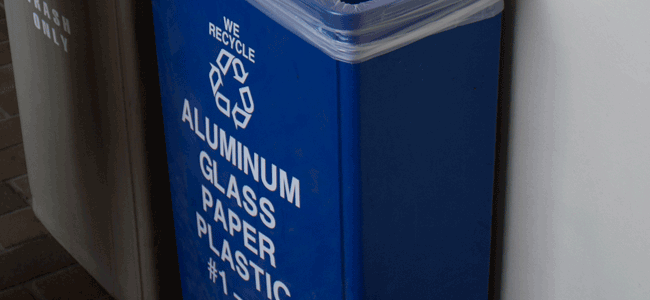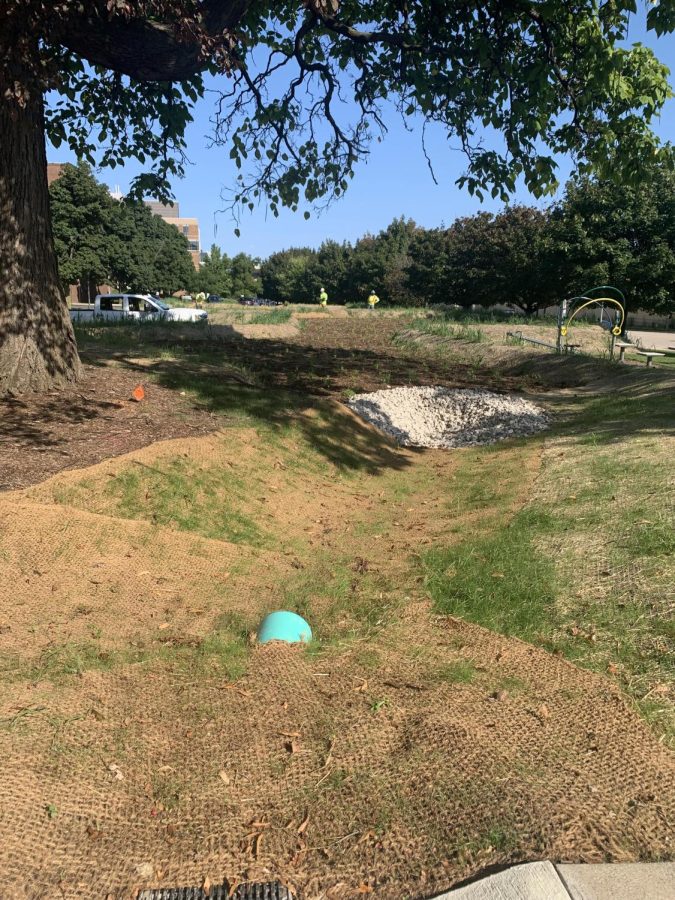This is a column part of a monthly series called “No Planet B” written by Sustainability & Energy Management Coordinator Chelsea Malacara and her sustainability interns. This series aims to provide insight on how we can begin to think and make sustainable choices on campus for a better future.
Recycling is an everyday habit for most people, but have you ever thought about what happens after you throw your bottle or can into the recycling bin? Let’s follow along the journey of an aluminum soda can you just recycled at Marquette University.
At Marquette University, the recycling process is single stream, this means that all of the recycling items are collected in a single bin and are sorted at a Material Recovery Facility (MRF). According to the Container Recycling Institute, single stream recycling is the easiest for consumers and encourages recycling. Knowing this, you throw your soda can without crushing it into a bin of mixed recyclable materials. You know it is important to recycle and that aluminum cans are one of the most sustainable packaging options, on average containing about 73% of recycled content. You hope that your efforts are making a difference. From Marquette the aluminum can will be picked up by Waste Management and brought to the MRF.
The majority of Marquette’s recyclables end up at Milwaukee Recycles to be sorted. When they arrive, they are dumped onto the tipping floor where they will be loaded onto the main conveyor to begin the sorting process. The sorting process may vary by MRF, but the general outline is as follows. The recycled items go through manual sorting where staff hand picks out non recyclables and large items such as toys or buckets. The items that passed the initial sorting go through a series of screening that separates paper from plastics, cans, and cartons. Within this screening process, it separates 3D from 2D materials, that is why you did not crush your aluminum can! If you had crushed it, the machine might have mistaken it for a 2D object and sorted it incorrectly. After the screening, the residual items go through a magnet to remove items such as steel, and the plastics go on to a scanner to be sorted by type. Remaining items go through what is called an Eddy Current that removes the aluminum can that you recycled. After your soda can has finally been sorted, it is bailed with the other aluminum cans. These bails are then shipped to a buyer who will use the recycled material by shredding, cleaning, and melting them down to create more aluminum products. Your recycled can creates a new beverage container, and the process starts all over again as long as you remember to recycle.
Your recycling efforts help in so many ways, including making new products, reducing waste, and conserving energy. It takes more energy to make a product from scratch, therefore recycling reduces energy waste. For example, a recycled aluminum can saves 95% of the energy required to make the same amount of aluminum from scratch.
Recycling is unique to the area you live in, so it is important to review the rules of your local facilities and the types of items they accept. In general, three recycling rules are 1. Recycle glass bottles, cans, paper, and cardboard. 2. Keep food and liquid out of your recycling. 3. No loose plastic bags and no bagged recyclables. Some basic tips are to flatten your cardboard, do not crush your cans, remove plastic lids from non-plastic bottles, and if you do not know if it is recyclable, look it up or throw it in the garbage bin. A big myth is that all items placed in the recycling bin will be sorted anyway, but when non-recyclable items end up in the recycling it increases cost, contamination, and risk to employees at the MRF. It is most important to focus on clean bottles, cans, paper, and cardboard.
This story was written by Megan Anderson. She is a sustainability intern for Chelsea Malacara, the Sustainability & Energy Management Coordinator for Marquette University. She is not a staff member for the Wire. She can be reached at megan.anderson@marquette.edu


